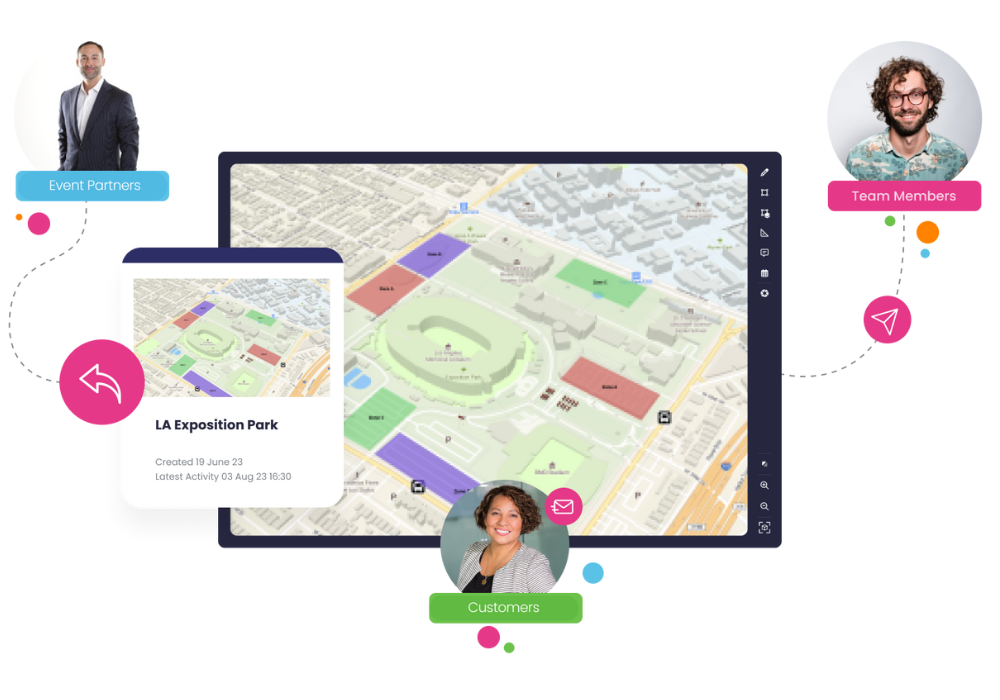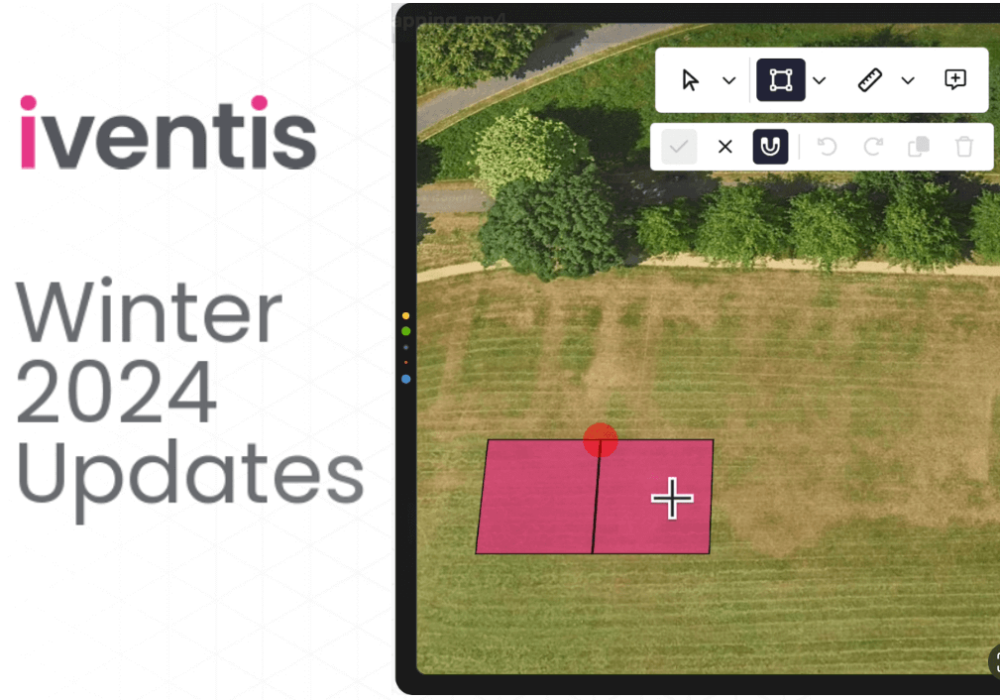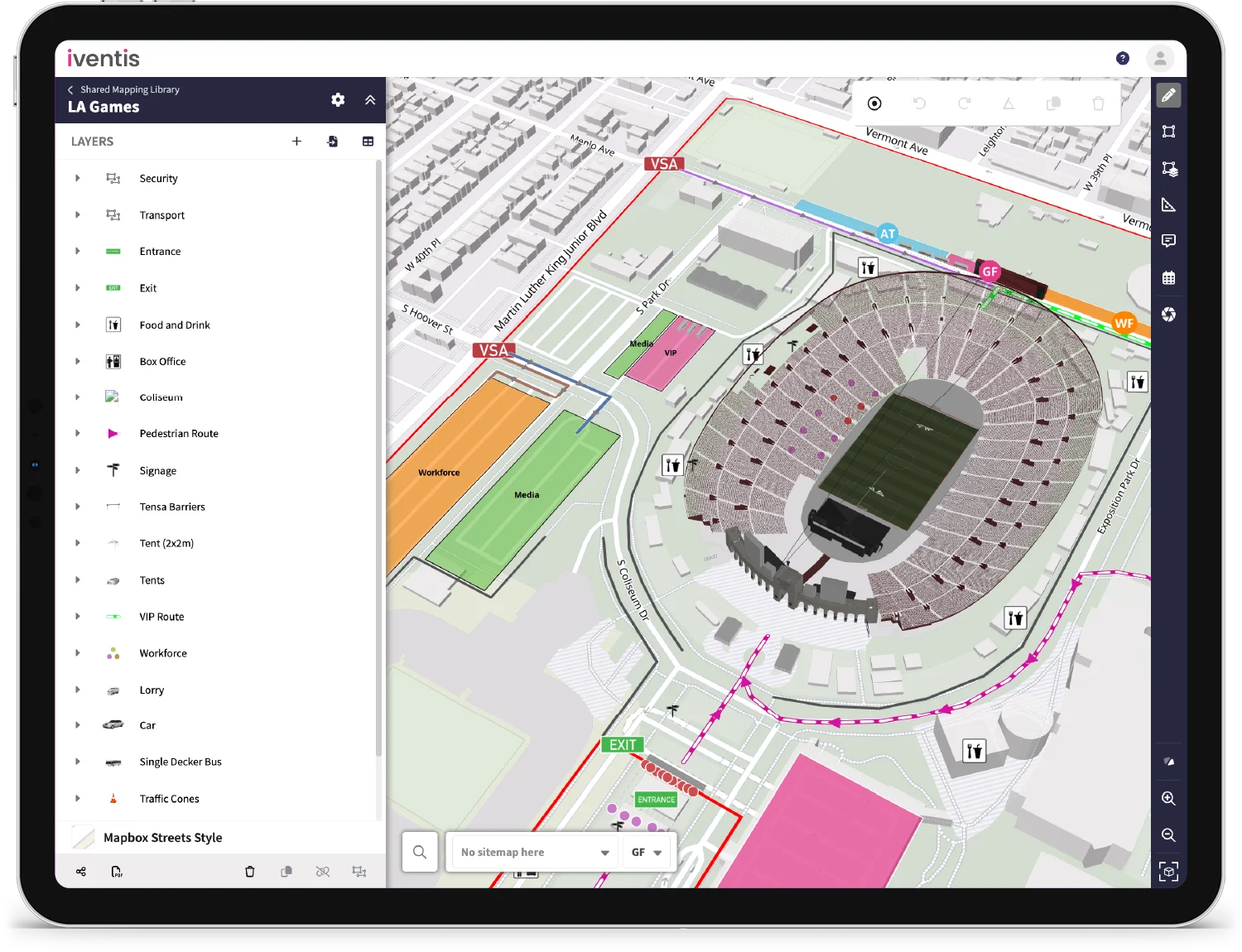Major events — such as the Olympics and the FIFA World Cup — require seamless collaboration between teams in the planning stages. The more coordinated teams are, the more likely it is that the event will run smoothly. However, bringing together the efforts of thousands of multi-disciplinary personnel is a significant challenge.
The teams working on major events are formed specifically for the project, and have often not worked together or on such projects before. These are also once in a lifetime events and host countries aim to create jobs locally, so many staff members won’t have experience of similar projects. When the event ends, the jobs end too, so the temporary nature of the work can attract younger and less experienced team members. Despite this, they must find a way to work effectively, as event planning is time-critical. Every moment counts, and lost time is very difficult to regain.
If major event professionals are provided with a common platform this reduces rework, avoid conflicts, and improves the quality of the event.
The people who work on major events spend a great deal of effort coordinating plans, but they usually lack dedicated tools and systems to do this effectively. Information sharing has become more sophisticated. Searching through emails to find an attachment or drafting complex plans in isolation in PowerPoint and Word documents shouldn’t be necessary when access to event mapping software is widely available.
Information, especially spatial plans, should be up-to-date, shared and accessible. If major event professionals are provided with a common platform this will reduce rework, avoid conflicts, and improve the quality of the event.
Team Growth Has an Impact on Event Collaboration
Delivering a major event is a fast-paced and — at times — chaotic process. Teams grow daily, and the individuals who are joining the group have to quickly get up to speed with the latest plans. This can be particularly difficult if a new member of staff has an important managerial role, as they will only have a few days to understand the current operations and their responsibilities.
If they are lucky, another member of the team will provide presentations, documents and notes to the new members, alongside forwarding any relevant emails. However, this is an inefficient use of time, and it is near-impossible to determine whether everyone has been given the right information to carry out their role.
Teams typically rely on tools like PowerPoint, Visio and Word to share and communicate plans, which are inefficient and limit collaboration.
The first day on the job is arguably the most critical for seamless event collaboration. If all the information group members need is readily accessible on a single portal — such as the Iventis visual planning platform — that data can be easily segmented and passed on to the ground team, ensuring they have everything they need to run their part of the event.
Equally, for managers or governing bodies overseeing the event and team, it can be extremely difficult to get access to the information they need to ensure plans are on track and coordinated. As a result, the team can spend a large amount of their time producing reports and presentations to communicate their plans and provide confidence that they are well prepared. If this information was captured in a common platform, it is available at any time for managers, stakeholders and governing bodies to explore at the level of detail they require
Event Collaboration Starts Years in Advance
Years before a major event takes place, teams from multiple agencies, as well as key stakeholders, have to plan the infrastructure and venues for the event. There can be a lack of consideration for operational requirements when infrastructure teams are disconnected. This can lead to problems later requiring expensive operational workarounds. Without a common planning platform from the earliest stages of planning, through to the event itself, plans and information quickly become a mess of versions and documents.
Completing venue walkthroughs to plan operations and logistics can also take up a great deal of time, particularly if plans involve interdepartmental collaboration, as schedules will have to line up.
Once the initial plans have been put together, they go to CAD or GIS technicians to be developed and sent around for feedback. Without event mapping software, plans could be presented on Powerpoint slides or circulated as hand-drawn notes. This is an ineffective way to gather comments, as it could be days or weeks before feedback reaches the technicians.
Working from home and having teams dispersed has caused further delays in this regard. Communication needs to be kept completely up to date, and the need for seamless multi-geographical collaboration is now more important than ever.
A Unified Team Makes Fewer Mistakes
Mistakes, delays or poor decisions in major event planning are costly and time-consuming.
Before implementing Iventis’ event mapping software, one client experienced the costly mistakes of poorly coordinated planning. One team had planned to construct a fence through a particular space when another was assuming that space could be used for transport operation. Only once the fence was built, this conflict was discovered. The critical transport operation could not be moved, and so the infrastructure had to be removed. This came at great expense as both the initial outlay and cost to remove the infrastructure was lost.
This is just one example of how crucial seamless event collaboration is. Having the most recent plans uploaded onto one platform, available to every team member, greatly reduces the risk of costly mistakes.
Large-scale mistakes in event planning are thankfully uncommon, but creating plans independently or in isolation can lead to a greater number of smaller mistakes being made.
A key example of this is during the workforce planning stage. With every team planning independently, an access point might have security staff, accreditation, guest services and other personnel provisioned. In reality, these roles can be consolidated. There is a tendency in major events to over scope which leads to excessive costs.
Common views of dot plans can save around 10% of staffing needs for a venue.
Event Mapping Software Strengthens Stakeholder Relations
In the early stages of an event, in particular, presentations to stakeholders and holding industry briefings are a significant part of an event professional’s role. Having up-to-date plans readily accessible on event mapping software can improve relations between the planners and stakeholders.
Having up-to-date plans readily accessible on event mapping software can improve relations between the planners and stakeholders. Data that is visible on an immersive platform encourages all parties to become more involved and provides valuable insights into the planning process.
With stakeholders more actively engaged, the risk of conflict around plans drops, and major event collaboration improves further. It instills confidence in the organiser’s plans and relieves the pressure of putting together detailed outlines and reports for high-level briefings.
Transfer of Knowledge
Major events, such as the Olympics, take place in different countries every four years. You might assume that some of the planning which goes into an event could be re-used or shared with the next edition to support their planning. However, this is rarely the case. Once each event is over, the organisers decommission their venues and the organisation as quickly as possible to limit expenditure. Even if they had the motivation, they lack the resources to archive and share useful planning information for future planners.
Having the plans stored and managed on a single platform opens the possibility for the transfer of knowledge at a detailed level
As a result, only high-level information is formally passed from one event to the next, such as a ‘post-Games report’ or conference. Because the detail is in so many disparate formats and locations during the planning process, this is usually lost or only transferred informally by staff members.
Having the plans stored and managed on a single platform opens the possibility for the transfer of knowledge at a detailed level with minimal effort. This can be invaluable for future organisers to learn from the past and get a head start. In the drive to make planning more efficient, this is more important than ever.
Using Event Mapping Software Practically
Iventis enables professionals to have the latest plans at their fingertips, improving event collaboration with the wider team, stakeholders and outside agencies. With the most recent plans widely accessible through visual event mapping software, it greatly reduces the risk of planning conflicts and the need to rework schedules in the later stages.
Event planning should be a fun and enjoyable process. Iventis provides a simple yet highly detailed approach to make this possible.
Discover how Iventis improves major event collaboration by booking a demo.





